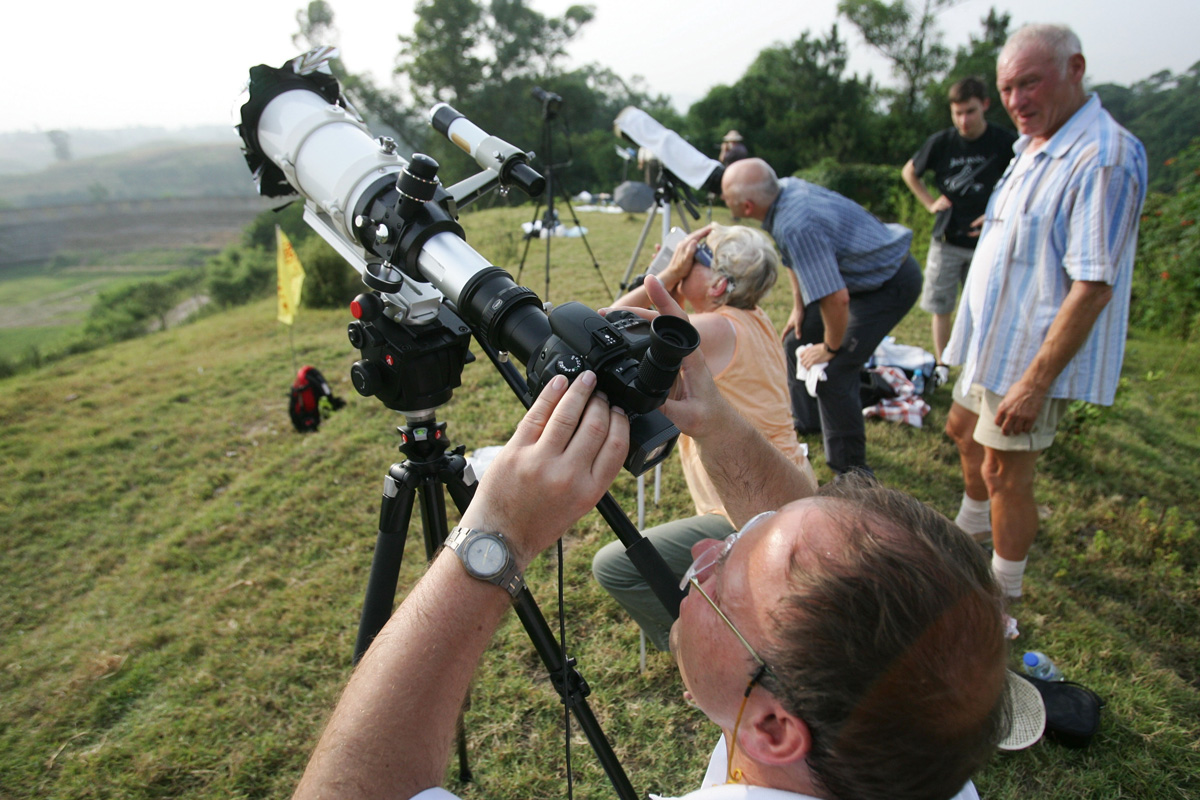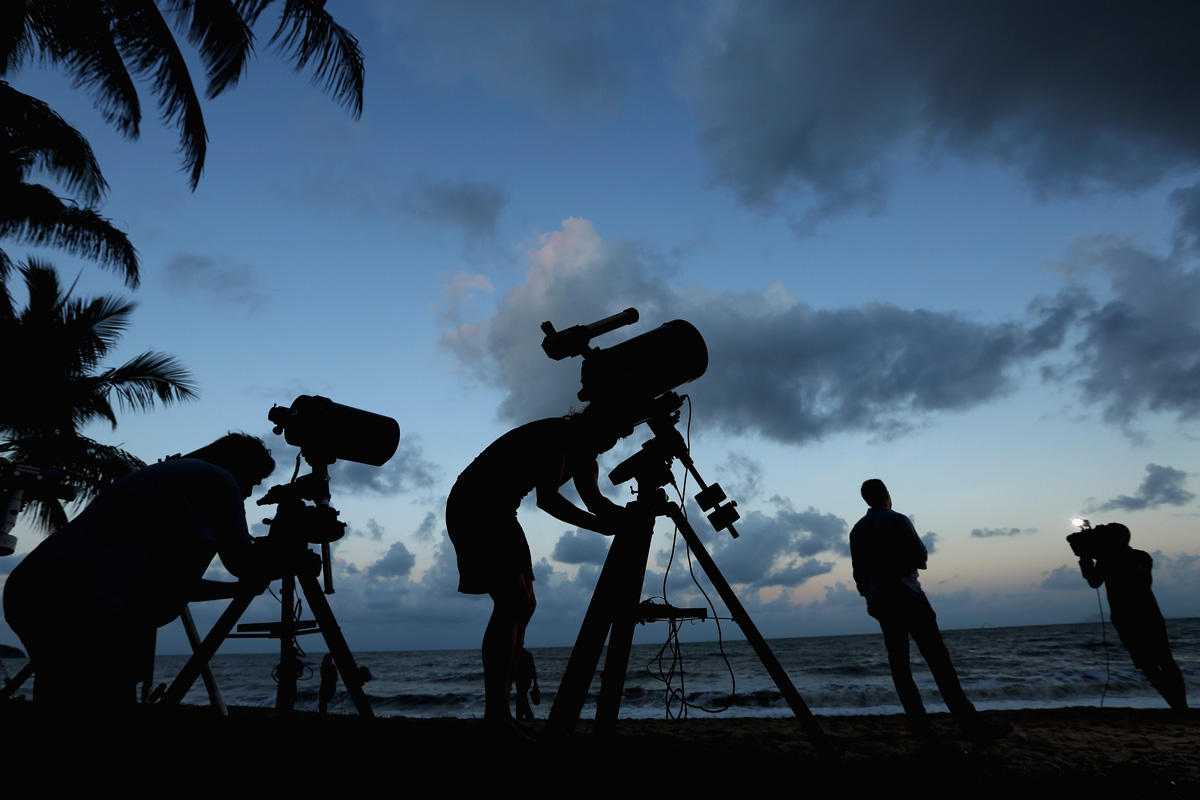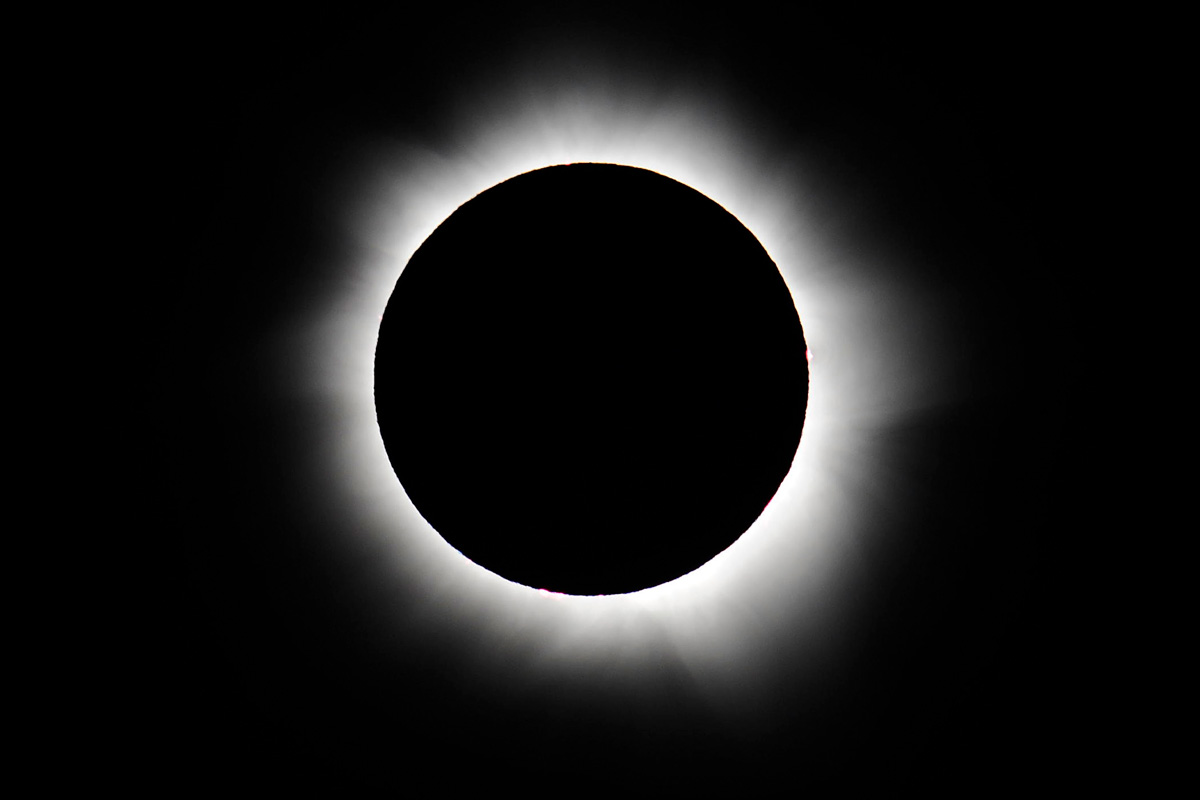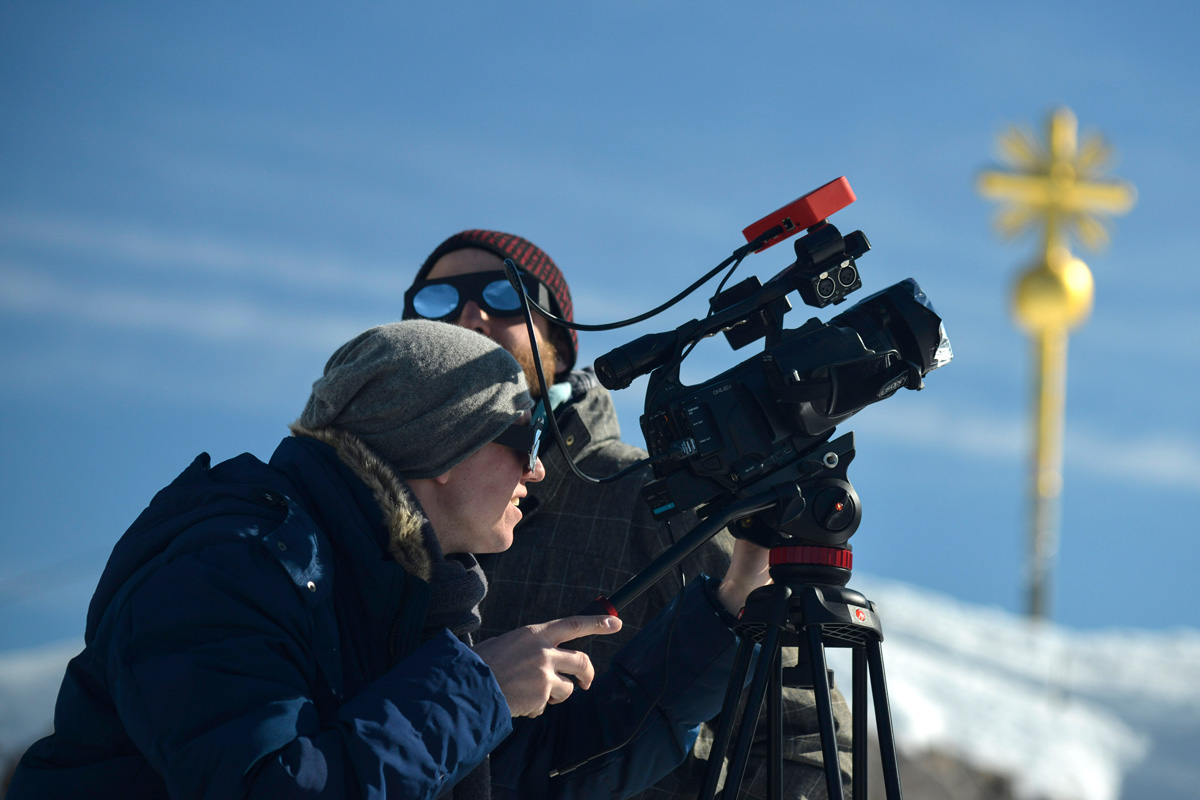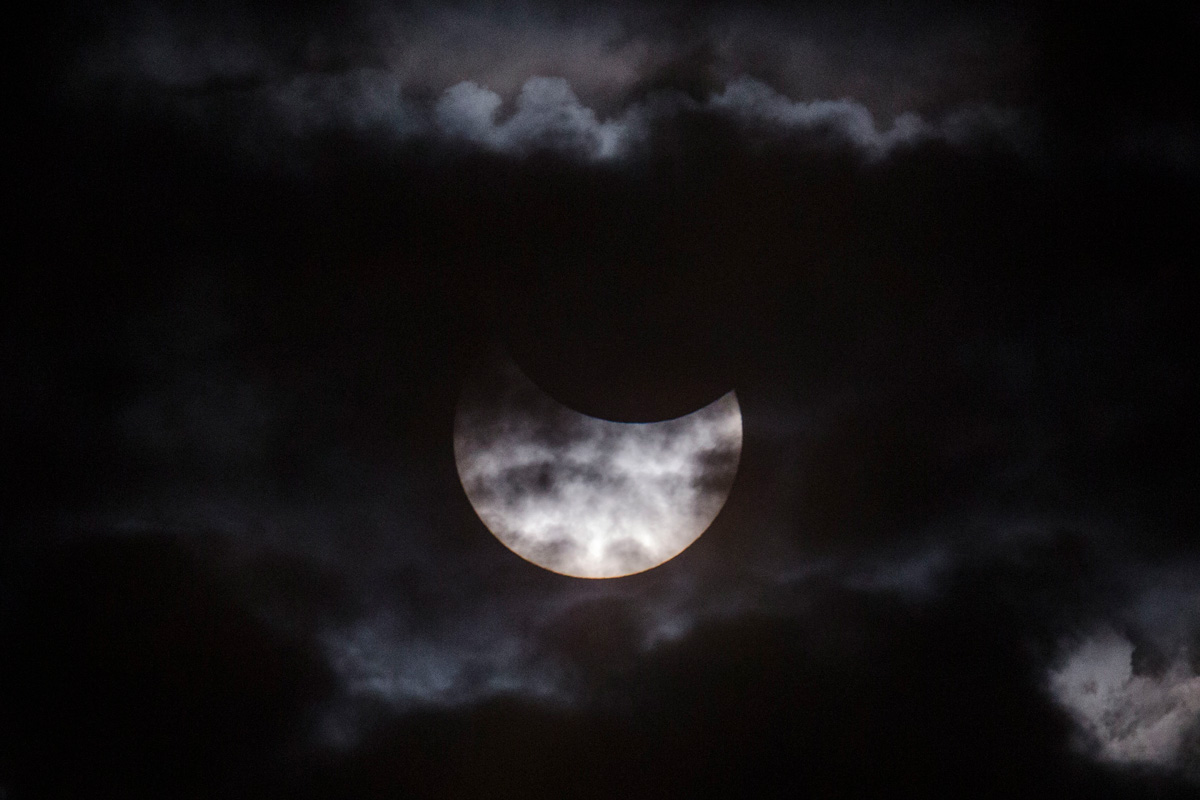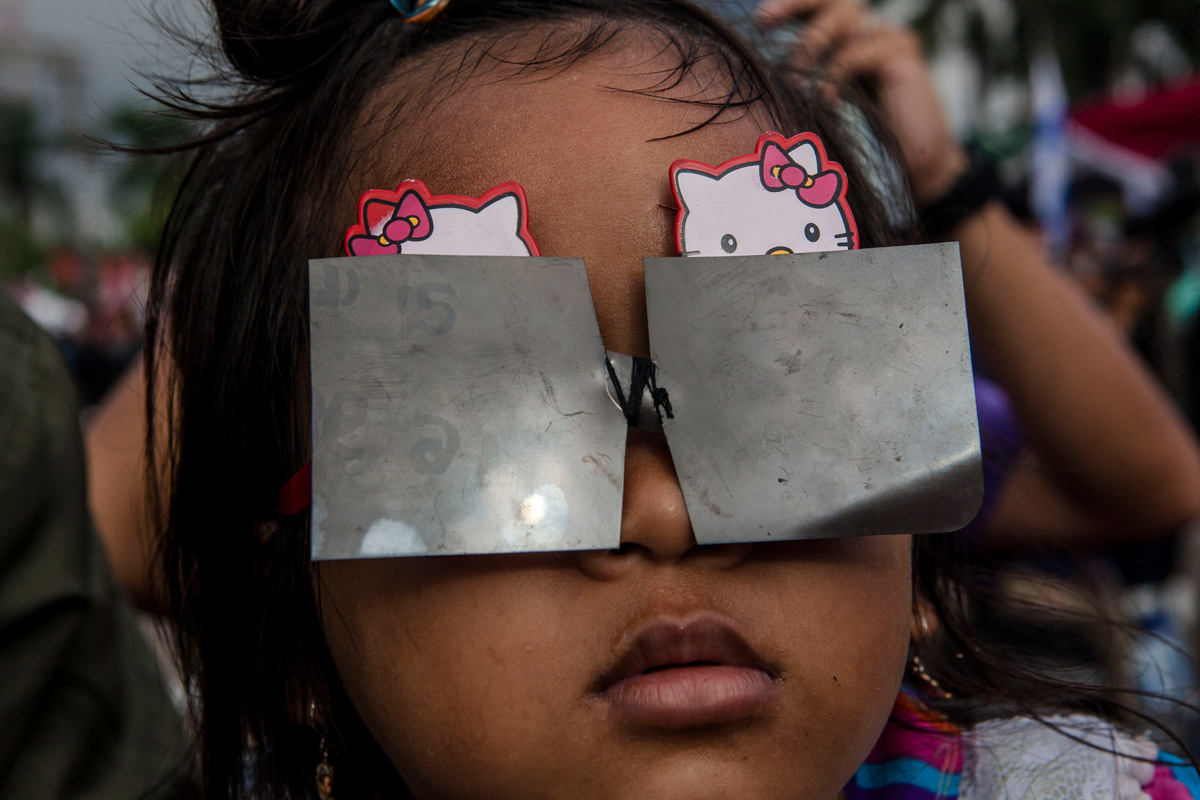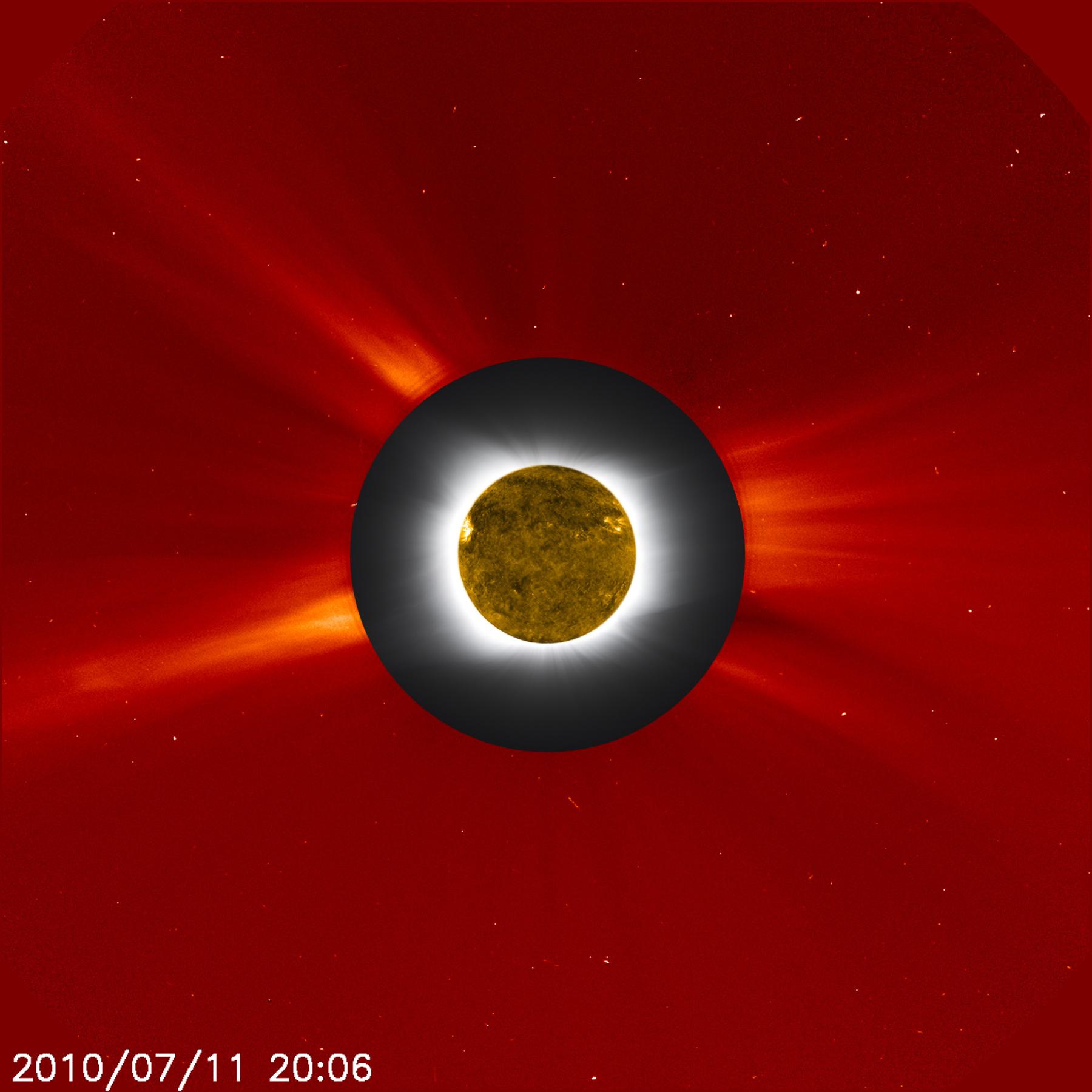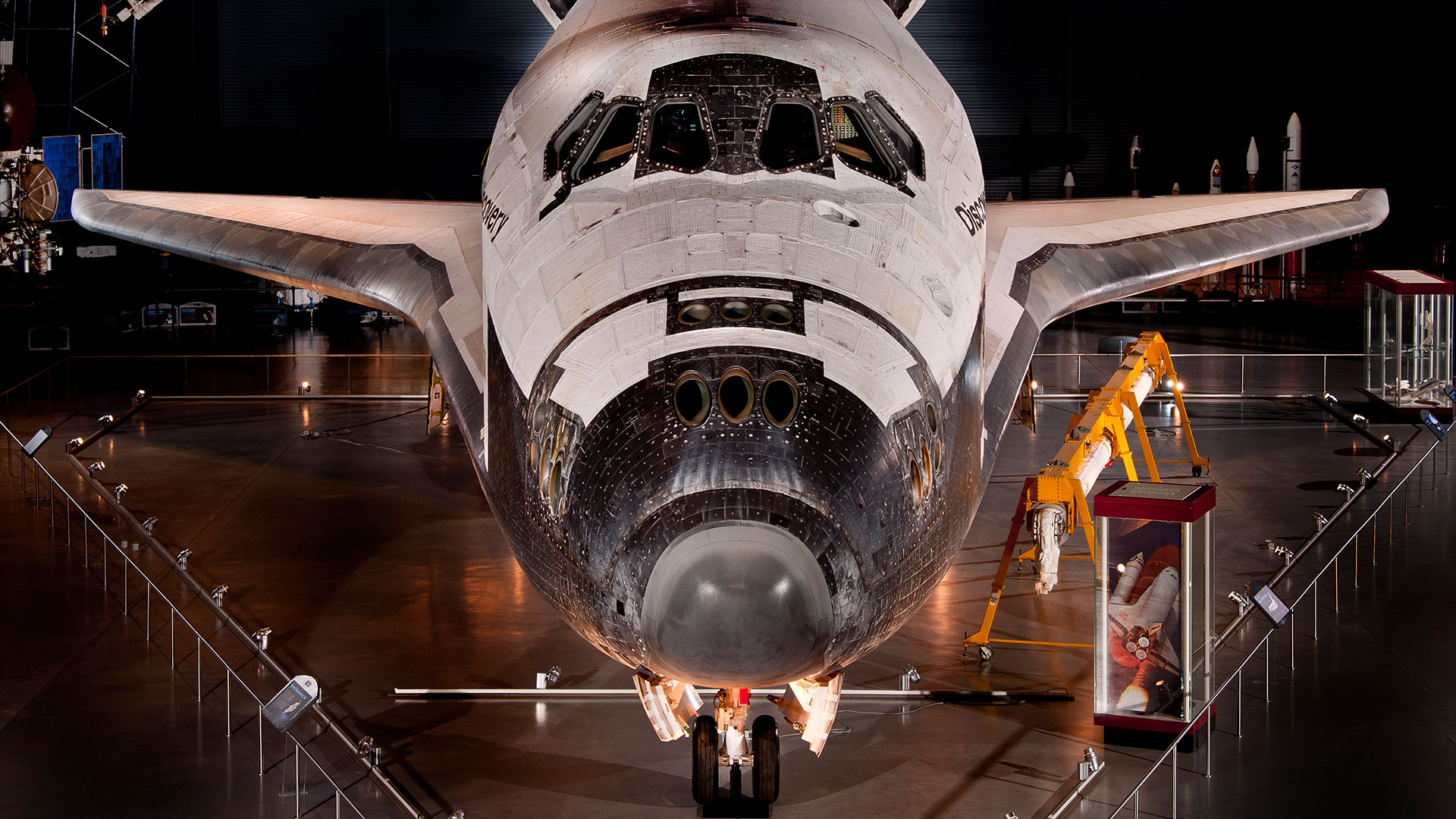A Brief History of Solar Eclipses, From 1900 to 2017 (Gallery)
Longest view
Astronomy enthusiasts from around the world, including these German viewers, traveled to China to see an exceptionally long total solar eclipse — it lasted a maximum of 6 minutes and 39 seconds in certain locations on the coast of Southeast Asia. The eclipse could be seen along a path through India, Nepal, Bangladesh, Bhutan, Myanmar and China.
Livestream prep
Computers and telescopes were set up the night before a NASA livestream of the total solar eclipse in November 2012 from Cairns, Australia — the first in Australia in a decade.
Glow down below
The total solar eclipse in November 2012 captured from Palm Cove, Australia.
Lights, Camera
A camera crew prepared to film the March 2015 partial solar eclipse in Garmisch-Partenkirchen, Germany, where the moon covered about 75 percent of the sun over central Europe.
Dark disk
A photographer captured this image as the sun and moon approached a total solar eclipse in March 2016 from Palembang City, South Sumatra province, Indonesia.
Hello, eclipse
A girl watched the onset of the March 2016 total solar eclipse in Palembang City, Indonesia.
This year
Throughout history, scientists have used solar eclipses to answer some of the biggest questions about our world, from the basic elements that make it up to the nature of space and time itself. This year, researchers are turning a long list of instruments skyward to glean as much as they can from the darkened sky and sun's ghostly corona. And with researchers predicting the upcoming eclipse will be the most watched of all time, the public will also contribute valuable documentation and data to the scientific effort.
Email Sarah Lewin at slewin@space.com or follow her @SarahExplains. Follow us @Spacedotcom, Facebook and Google+.
Breaking space news, the latest updates on rocket launches, skywatching events and more!

Sarah Lewin started writing for Space.com in June of 2015 as a Staff Writer and became Associate Editor in 2019 . Her work has been featured by Scientific American, IEEE Spectrum, Quanta Magazine, Wired, The Scientist, Science Friday and WGBH's Inside NOVA. Sarah has an MA from NYU's Science, Health and Environmental Reporting Program and an AB in mathematics from Brown University. When not writing, reading or thinking about space, Sarah enjoys musical theatre and mathematical papercraft. She is currently Assistant News Editor at Scientific American. You can follow her on Twitter @SarahExplains.
